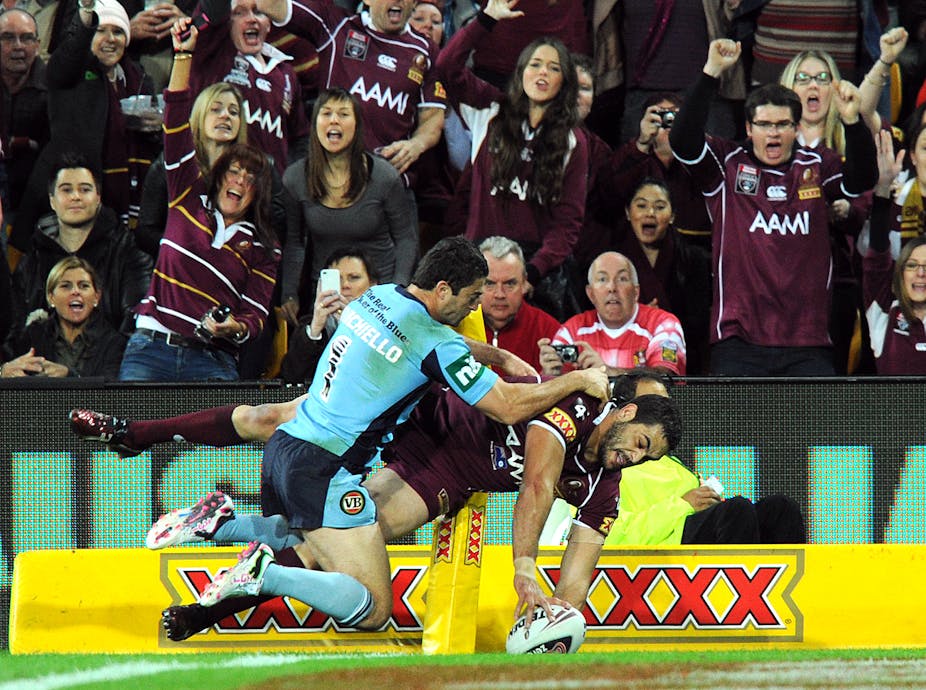The move to establish an independent commission to run rugby league is a long overdue acknowledgement that strong corporate governance is essential in the small but intensely competitive Australian market.
For too long, Australia’s rugby league competition has been held back by a complicated and inefficient system of governance, allowing its independently-governed rival code AFL to gain a significant foothold over it.
Rugby league began in Australia in 1908 as a breakaway code from amateur rugby union. With the exception of the Melbourne Storm, the competition has never really expanded from rugby union’s original two states, New South Wales and Queensland.
While this allowed the sport to develop its main drawcard, the annual State of Origin series, it also created problems in the governance of the sport, with state-based interests, rather than the best interests of the sport, often driving decisions.
It has a complicated governance system, in which the Australian Rugby League (ARL), the New South Wales Rugby League (NSWRL), the Queensland Rugby League (QRL) and the National Rugby League (NRL) all have various roles in running the sport.
In comparison, AFL has had an independent commission since 1993, with a chairman and eight commissioners. (It replaced a previous board of directors, which was made up of one member from each club.)
The most significant aspect of the commission is its independence from the clubs, which allows it to make decisions in the best interests of the game, rather than individual stakeholders.
This independence is seen as one of the main reasons why the AFL has grown in strength over the last two decades, and provides a guiding structure for a rugby league commission.
The proposal to create an AFL-style, eight-person rugby league Commission has to be agreed upon by representatives from game’s main stakeholders, the ARL, QRL, News Limited (a co-partner of the NRL), and the 16 NRL clubs.
After some pretty hefty interstate political manoeuvring, it appears that eight commissioners have been agreed upon.
But the other problem for rugby league is that it has been forced to put television rights negotiations on hold while it finds a solution to the formation of the commission – just months after the AFL signed a $1.25b five year television deal
It would be wrong to say that the formation of an independent commission is essential to the long-term survival of rugby league. However, there is no question the AFL is now in a stronger position than rugby league.
One clear reason for the AFL’s dominance in terms of revenue, attendance and TV audience, is the organisational efficiency it has gained through an independent commission.
By maintaining a distance from the clubs, the AFL Commission has been able to make decisions about the game’s future that benefits all stakeholders rather than individual interests.
This independence is seen as one of the main reasons why the AFL has grown in strength over the last two decades, and provides a guiding structure for a rugby league commission.
The same cannot be said for rugby league’s existing administration, where competing interets have led to a number of bad decisions that have seen the sport suffer.
That rugby league is in competition with the AFL can be seen by the fact that two of its star players, Karmichael Hunt and Israel Folau, were lured to the AFL with large money offers.
This competition is only set to escalate in the decades to come after the AFL expanded to the Gold Coast, where rugby league had recently admitted a team, and Greater Western Sydney, considered by many to be rugby league’s heartland.
If rugby league is to have any hope of combating this threat posed by the AFL, then an independent commission would appear to be a must for future growth of the sport.
It’s worth noting that rugby is not the only code confronting this issue. Cricket is arguably experiencing the same problems of an outdated structure holding back its development.
Cricket is one of Australia’s earliest games: the first Australia v England test was held in 1877, 24 years before Australia even federated. It has been run by a centralised authority in this country since the late 19th century, now known as Cricket Australia (CA).
While CA is responsible for the promotion, development and organisation of cricket, its archaic structure does not reflect the spread of talent and strength across the states that make up the competition.
The three original competitors for the interstate Sheffield Shield competition, New South Wales, South Australia and Victoria, still all have three directors each on the 14-member board.
The states that entered the competition at a later date have only two, as is the case of Queensland and Western Australia, or in the case of Tasmania, just one.
Tasmania not only won the 2011 Sheffield Shield, but has also produced far more Australian players than South Australia over the last decade.
Like rugby league, the system appears ripe for reform. If the sport wants to continue to flourish into the 21st century, it needs to leave its antiquated structure behind.

